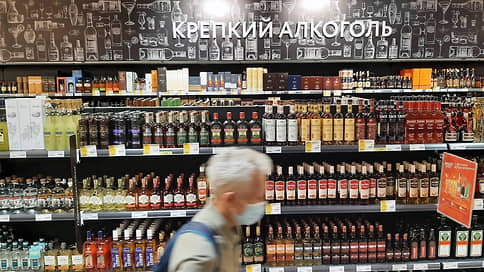Russia is the birthplace of blends – Newspaper Kommersant No. 53 (7498) of 03/29/2023
[ad_1]

In the Russian whiskey market, hit by a 50% reduction in imports in 2022, the shares of local producers are growing. In the first months of 2023, Beluga Group, Stellar Group and Ladoga produced the largest volumes of the drink, while Diageo, the producer of Bell’s whiskey, who left Russia, sharply reduced the spill. Competition in the market will only increase, and the composition of the largest players may still change.
According to the results of the first two months of 2023, the Beluga Group (Fox & Dogs brand), Stellar Group (Mancatcher, Steersman) and Ladoga (Fowler’s) became the largest whiskey producers in Russia, follows from the data of market participants available to Kommersant. According to these estimates, Beluga Group produced 219 thousand deciliters of whiskey in January-February 2023, which is 58% more than in the first two months of 2022. Stellar Group tripled the bottling of the drink, to 103,000 deciliters, and Ladoga more than tenfold, to 102,000 decalitres, year on year.
Alvisa Group (Nucky Thompson, Red & Black, etc.) took fourth place in whiskey production in January-February this year, having more than tripled its bottling year on year, to 83,000 dl. The Tula Distillery 1911 (Noble Stag, Dunmor) was fifth, producing 58,000 deciliters of whiskey, which is 67% more than a year earlier. In general, according to the data available to Kommersant, in January-February 2023, whiskey production increased by 56% year-on-year, to 706 thousand decalitres. Five companies accounted for more than 80% of the volume.
CJSC Sparkling Wines, which since 2020 has been bottling Bell’s and White Horse drinks under a contract with Diageo, which left Russia in 2022, has dropped out of the list of the largest whiskey producers, and is also developing its Forest Cat brand. According to the data available to Kommersant, in January-February of this year, Sparkling Wines produced 8 thousand decalitres of whiskey, and in the first two months of 2022 – 120 thousand decalitres. Sparkling Wines, Beluga Group and Stellar Group did not provide any comments.
Ladoga President Veniamin Grabar says that in addition to Fowler’s, Tavern Hound, as well as Carrygreen and Black Beast from Irish and Scotch spirits, respectively, became drivers of growth in the whiskey category in the first quarter of 2023. By the end of 2023, Ladoga expects to produce more than 750 thousand deciliters of whiskey and plans to invest 350 million rubles in brand promotion in the category, says Mr. Grabar.
The category of whiskey has become the most affected in the Russian alcohol market after the outbreak of hostilities in Ukraine. According to data available to Kommersant, in 2022, whiskey imports to the Russian Federation decreased by 52%, to 1.81 million decalitres. Alexander Stavtsev, head of the WineRetail information center, says that the situation with the availability of popular brands imported through parallel imports has improved in the category from 1.5 thousand rubles. per bottle of 0.7 liters, and in the mass segment of whiskey, the deficit persists. Luding Group Marketing Director Andrey Ushakov adds that in 2022 a large number of new products have appeared in the segment and there is already quite high competition. According to NielsenIQ, 77 new whiskey brands appeared in Russia in 2022, 14 of which are local brands.
While alcohol companies retain interest in the category. Rust Group of Companies expects to sell 270,000 decalitres of Darrow whiskey this year by expanding its listings and launching new formats. In addition to the import portfolio of Indian whiskey, the Alcoholic Siberian Group (ASG) plans to sell more than 100,000 decalitres of whiskey of its own brands. In December, ASG launched Bargest whiskey with a blend of grain and malt distillates, and plans to launch two brands of Scotch distillates in May. Consumer expertise has intensified in recent years, so it took about a year to search and select alcohols, they say in the LRA. Luding plans to add Scotch whiskey under the Highland Cattle brand in the premium segment to existing brands, as well as whiskey from Irish spirits. Leading brand manager of the Tula Distillery 1911 Elena Kostina believes that the demand for whiskey will continue to grow, including due to the withdrawal of some importers from the market.
Alexander Stavtsev notes that the demand for local brands will depend on the stable quality of the drink, for which it is important to adjust the distillate import process. Otherwise, consumers could start switching back from whiskey to vodkas, bitters and brandy, he says. According to the NielsenIQ retail audit, in January-February 2023, whiskey sales decreased by 19% in volume and 18.5% in money year-on-year. Sales of gin grew by 42% and 38.1%, brandy – by 12.3% and 21.9% respectively.
[ad_2]
Source link





